Studying in general upper secondary school
In general upper secondary school, you learn to plan your studies in a long-term manner, take responsibility for your own learning, and assess your own progress.
As a student, you plan your own study program and set your own study goals. If you encounter any problems in your studies, you will receive support and assistance.
Studies and study materials are free of charge in general upper secondary school.
Curriculum and distribution of lesson hours

Upper secondary school studies usually last for three years, but they can also be completed in four years.
General information about upper secondary school studies:
- The studies are completed in study modules.
- The modules are usually 1-3 credits and can consist of one or several subjects.
- The school year is divided into five periods, each lasting about 7.5 weeks.
- The minimum requirement for completing upper secondary school is 150 credits.
- There are 94 or 102 mandatory credits, depending on whether you choose short or long mathematics.
- There are also at least 20 national elective credits. Local elective credits and interdisciplinary thematic studies such as "Towards Upper Secondary School Studies" and "Sustainable Future" can also be included in the studies.
First year: when you start general upper secondary school
- You will get acquainted with upper secondary school studies.
- You will participate in group integration and get to know other first-year students, also known as "freshmen".
- You will mainly study mandatory study modules.
- You can apply to become a member of the student council or participate in tutoring activities.
- During the first year, you will complete 60 credits, which is the pace for completing upper secondary school studies in three years.
- Summer break: You can choose to complete studies in summer or adult education.
Second year
- You will mainly study mandatory study modules.
- The ball of the seniors (wanhojen tanssit event)
- The number of elective modules increases during the second year.
- You can begin your matriculation examination and participate in the exams.
- During the second year, you will complete 60 credits.
- Summer break: You can choose to complete studies in summer or adult education.
Third year or "abivuosi"
- You can participate in the autumn matriculation exams.
- You will focus on elective study modules in matriculation subjects.
- You have completed the upper secondary school curriculum, which is 150 credits.
- Your studies will end after period 3, and you will participate in the traditional student celebration called "penkkarit".
- Reading holiday. You will participate in the spring matriculation exams.
- You will apply for further studies and can participate in entrance exams.
- You will graduate from upper secondary school, congratulations! If you complete your studies in four years, please see the description of the fourth year of upper secondary school studies.
4th year of upper secondary school studies
- You study either during the 1st period (3.5-year plan) or during periods 1-3 (4-year plan)
- You participate in the autumn matriculation examination (university entrance exam)
- You have completed the upper secondary school curriculum, which consists of 150 credits
- You participate in the spring matriculation examination (university entrance exam)
- You apply for further education and can take entrance exams
- You graduate from upper secondary school, congratulations!
You have a great opportunity during general upper secondary school to have an impact on many aspects of your studies. These include teaching and evaluation, as well as issues related to well-being and mental health.
It is recommended that you follow the @espoonlukiot account on Instagram, where you can receive important and interesting information about topics such as university studies, various competitions and events, and international cooperation aimed at general upper secondary school students. The account also showcases opportunities where young people can make a difference. The schools also get a chance to voice their opinions through the account.
During your studies, you will have the opportunity to participate in various surveys. The results of these surveys are used to develop and improve young people's issues, including yours. So be active and share your opinion!
You are part of the student body in your high school, and the student council elects a new board every year. If you want to make an impact on your school, apply to join the student council's board (OPKH). At the same time, you will learn a lot about civic engagement.
The Espoo Youth Council (NUVA) consists of 40 young people who are elected every two years. The next election was held in the fall of 2023.
The Round Table is a joint body of Espoo high schools that operates under the Espoo Youth Council (NUVA). The members of the Round Table are the chairpersons and vice chairpersons of all the student councils in Espoo's general upper secondary school. The operations are led by the chairperson and vice-chairperson elected from the Espoo Youth Council. The Round Table deals with important issues for students that arise from either the students or the Espoo Youth Council, and takes a position on various issues related to high school education. If desired, the Round Table can make initiatives to the Youth Council. NUVA participates in decision-making in Espoo and advocates for young people's issues, raises young people's desires, and communicates young people's opinions on current issues.
Did you know that young people in Espoo have their own feedback channel? Check it out and leave feedback or initiatives for the city.
The Finnish National Board of Education develops the national curriculum framework. The national curriculum framework is a regulation that requires education providers to include the learning objectives and key content of education in the school or provider-specific curriculum.
Students who began their studies in the autumn of 2021 will follow the 2021 curriculum for Finnish-language high school education in Espoo (ePerusteet(external link, opens in a new window), in Finnish).
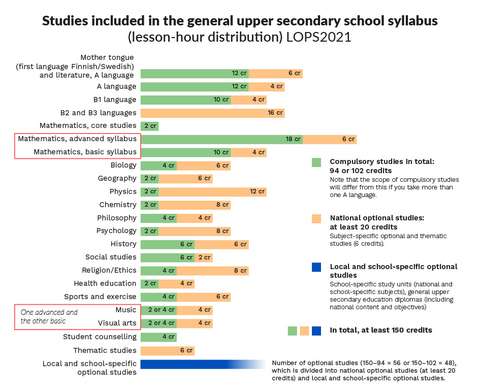
Support for studying
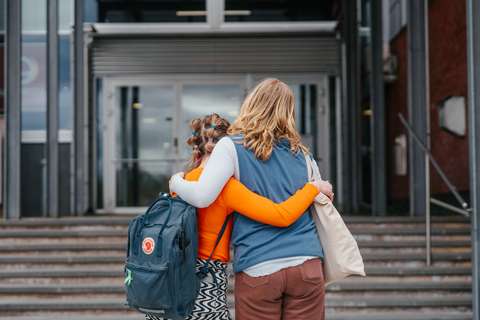
Read more about Student welfare and support for studying
What is free for students?
- Education
- Daily meals
- Study materials and computers
- Tools, clothing, and supplies required for education
- The 5 exams required to complete the high school curriculum and pass the matriculation examination, as well as the possibility to retake failed exams
- School commutes of at least seven kilometres
Read more about free upper secondary education for compulsory education completers.
29.5.2023 Press release / KELA
Online application for school transport subsidy published - subsidy for the new academic year can be applied for in the OmaKela e-service already before school starts
Kela has published a new online application for school transport subsidy, so school transport subsidy can be applied for easily and conveniently in the OmaKela e-service already before the new academic year starts. Students who continue their studies can already apply for the subsidy. If a student starts their upper secondary studies in the autumn, they can apply for the school transport subsidy once they have accepted their offer of admission. In academic year 2021-2022, about 57,400 students received school transport subsidy.
The application for school transport subsidy has changed. You can now apply for the subsidy in the OmaKela e-service with the new online application. Before this, you had to submit your application to your school(external link, opens in a new window).
– The application for school transport subsidy and the purchase of travel tickets are now going online. One consideration is that most applicants do not necessarily yet have their own online banking credentials to use online services, says Piia Kuusisto, Benefits Manager in Kela’s Student Financial Aid Group.
The school transport subsidy is intended for students in upper secondary education, and they can apply for school transport subsidy if they have a long commute to school. A total of about 57,400 students were granted school transport subsidy from Kela during the academic year 2021-2022, an increase of 36 per cent on the previous year. The number of recipients increased because compulsory education was extended to the age of 18 and upper secondary education was made free of charge. The terms of eligibility are somewhat different for students entitled to free education.
Young users have been involved in the development of the online application
When developing the online application, especially young mobile users’ needs were considered, so that young people could easily and conveniently fill in the application. Although the questions that are asked in the application can be complicated, the aim has been to keep the language of the application as clear as possible.
– The young persons also tested the application before it was published. The aim is that applying for the subsidy is easy and convenient, especially if you are contacting a public authority for the first time, says Helena Ikäheimo, Product Owner for the online application for school transport subsidy.
The school transport subsidy is often the first Kela benefit that young people apply for independently. The recipients of school transport subsidy are usually aged 16-19.
Instructions for students: how to apply for school transport subsidy in the OmaKela e-service
If a student is continuing their upper secondary studies in the coming academic year, they can already apply for the school transport subsidy. But if a student starts their upper secondary studies in the autumn, they can apply for the school transport subsidy once they have accepted their offer of admission.
Do as follows:
- Get your own online banking credentials or a mobile certificate.
- Log in to the OmaKela e-service and complete the online application for school transport subsidy.
- Send the application.
- If you use Matkahuolto buses, Waltti bus services or HSL, Nysse or Föli public transport for your trips to school, Kela can grant you the right to purchase tickets immediately after the application has been submitted. You can buy a subsidised ticket at the earliest on 18 July 2023.
- See information on your possible right to purchase tickets in OmaKela.
If student that is a minor, cannot apply for school transport subsidy himself or herself, the student’s legal guardian can apply for the subsidy on behalf of the student(external link, opens in a new window). It is still also possible to apply for school transport subsidy on form KM 1e. The application form has also been updated, and the form must be submitted to Kela.
Subsidy for June and July 2023 must be applied for on an application form
If a student applies for school transport subsidy for June and July 2023, the subsidy must be applied for on an application form. The student must submit the form to the school. School transport subsidy for June and July cannot be applied for in the OmaKela e-service.
Additional information for customers
- How to apply for school transport subsidy(external link, opens in a new window)
- Press release 26 April 2023: Applications for school transport subsidy to be submitted to Kela from now on – will ensure quicker processing(external link, opens in a new window)
- Koulumatkatuen hakeminen siirtyy OmaKelaan (elämässä.fi)(external link, opens in a new window)
The plan for preventing bullying in the Finnish-language general upper secondary schools of Espoo is called 'Together Strong – No to Bullying.' Its aim is to promote student well-being and strengthen the sense of community in the schools.
In our upper secondary schools, we work persistently to ensure that everyone, both young people and adults, feels good and that no one is bullied.
The plan includes 14 measures that aim to ensure consistent practices for preventing and intervening in bullying. The schools are responsible for implementing these measures.
Measures to prevent bullying
In our upper secondary schools, there are various ways to monitor the daily lives and well-being of students. This information is used in many different ways to prevent and intervene in bullying.
- The schools have a toolkit for identifying social situations and emotions and for learning new skills. It is easier to take action when there are tools to work with.
- The schools have rules that help both prevent and firmly intervene in bullying once problems have arisen.
- Group building is an everyday occurrence throughout the academic year in upper secondary schools. Continuous group building strengthens the group's ability to function, improves the atmosphere, and increases the sense of security.
- Students starting in upper secondary school are informed about the student welfare services. During group meetings, they are informed about the community work done in the schools (e.g., bullying prevention) and the opportunities for individual support and assistance.
- In upper secondary schools, all students and guardians have an easy way to report concerns related to bullying.
- Different actors' roles in preventing bullying are recognized in upper secondary schools. Everyone working in the school community is responsible for this.
- There is an understanding and expertise in restorative approaches in upper secondary schools. A restorative approach emphasizes a positive process based on encounters, dialogue, and cooperation aimed at increasing mutual understanding. It strengthens readiness for constructive mediation of challenging situations, enhancing participation.
- The student who has been bullied has a designated safe adult who helps and supports them going forward.
- Everyone in the school community is involved in preventing bullying. This strengthens the atmosphere that reduces bullying.
- Students who have been bullied have the opportunity to share their experiences and receive peer support.
- Students receive special support and guidance during transitional phases, such as transitioning from one school level to another or to a new school. These are always critical points in a student's educational path.
- Guardians are aware of how bullying is prevented and addressed in their own student's upper secondary school.
- There is a clear procedure for intervening in bullying in upper secondary schools. The agreed-upon action model is known to students, guardians, and all school adults.
Shared course offerings
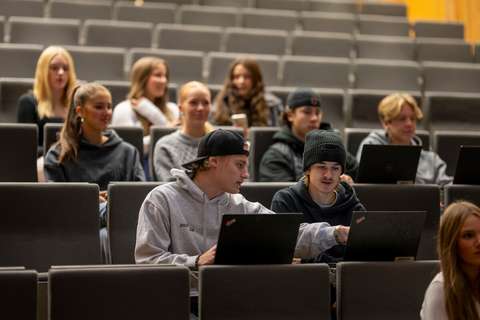
General upper secondary school students in Espoo have diverse opportunities to get acquainted with university studies and to attend university and polytechnic courses while still in secondary school.
Learn more about the college courses for students in general upper secondary school
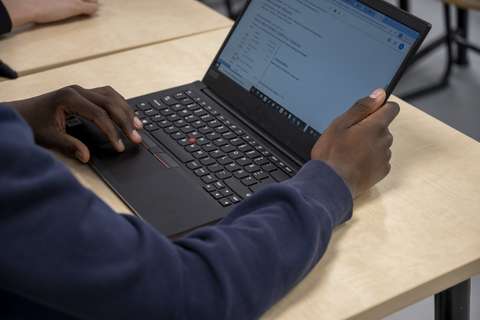
Courses from the shared course offerings are meant for all general upper secondary students in Espoo. You can choose courses from all schools regardless of which school you study in.
Enrolling in the courses
Enrolment in the courses is done through Wilma. The front page of Wilma will show all course platters in which one can enroll at the moment. The course platters are named according to the school's name, the school-year and the study period, e.g. "2023–2024, Kaitaa general upper secondary school, 1. period”.
Students without the Espoo Wilma-username are asked to contact the guidance councellor of one's own school. Contact information are found from each school's website.
Own religion/ethics studies and mother tongue courses
Enrolment in own religion/ethics studies and mother tongue instruction supplementary to general upper secondary education takes place through Wilma.
Own religion instruction is offered in the following subjects (course platter in Wilma (in Finnish): 'Oman uskonnon opetus')
- Islam
- Catholicism
- Orthodox religion
Own mother tongue instruction is offered in the following languages (course platter in Wilma (in Finnish): 'Oman äidinkielen lukiokurssit')
- Albanian
- Arabic
- Dari/Farsi
- Chinese
- Somali
- Russian
In case you mother tongue is not present in the list but you are interested in the possibility of participating, please contact Education Planner Sheena Kopsala at maija.metsola@espoo.fi.
Courses from Espoo adult education centre included in the studies
Certain courses from the Espoo adult education centre will be accepted to the students of Espoo general upper secondary schools .
The Espoo adult education centre aims at offering meaningful and useful opportunities that ordinary schools do not arrange on their own. The courses do not replace compulsory courses but are applicable for those interested in them.
Learn more about the courses at www.ilmonet.fi. (external link, opens in a new window) The site provides more accurate information about the contents, facilities, teachers and course fees. You find a course easily by the course number (E-rooted number series, e.g. E162617). Even if the course is full, you can enroll in the queue. Cancellations are likely.
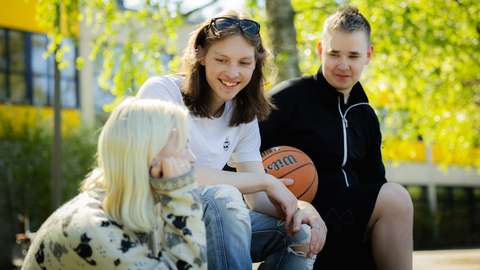
In summer school, you can accelerate your studies or fill any gaps in your knowledge. The City of Espoo’s summer school provides teaching in line with the curriculum for Finnish-speaking general upper secondary schools for students of general upper secondary schools, young people completing their basic education and students of vocational institutions. Teaching is provided in Finnish. Read more about summer school in Finnish.
The Matriculation Examination
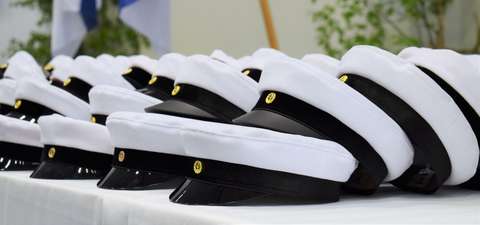
Students take the Matriculation Examination at the end of their general upper secondary studies. The Matriculation Examination is a maturity test in which students demonstrate their knowledge and skills acquired during general upper secondary education.
Read more about the Abitti-system(external link, opens in a new window) (only in Finnish)
